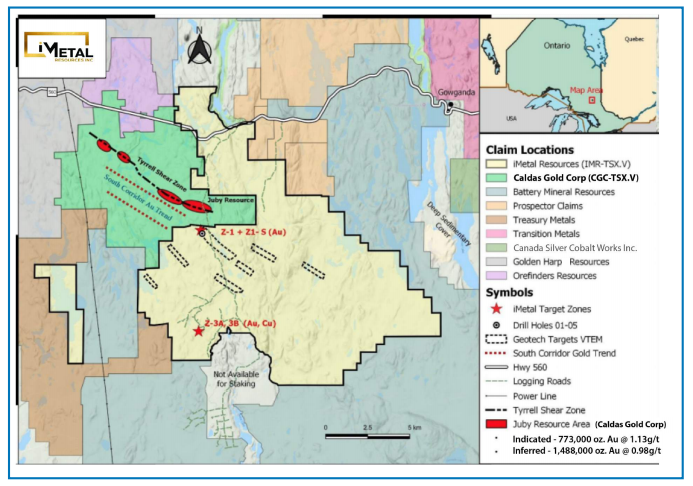When looking for a dominant investment theme, the approach I take involves looking at global or big-picture conditions. I study trends, read the news and watch and listen to what's going on in the world. What I'm looking for is something so powerful, so dominant, it's going to be my guide to where I invest—I focus on the factors that I think will drive headlines going forward.
If you had used this approach almost a decade ago (and were to use it today) to try and identify major long term trends within which you can see long term opportunities you would have to come to the conclusion that the resource sector looks especially attractive/lucrative.
In the resource sector there were, and still are, considerable opportunities presenting themselves—investable themes always blossom from these major trends. Three examples follow:
- Obama's electrification of America's transportation system.
- Growing human population climbing the protein ladder.
- High oil prices.
- Obama's electrification of America's transportation system—lithium.
- Growing world human population climbing the protein ladder—potash.
- High oil prices, reduction of carbon footprint—nuclear power/uranium.
After you've made your investment, you need to show some patience and let your chosen management team, and the trend, go to work for you. Watch and wait—if you've made the correct decisions, management conducts successful programs, does a creditable promotion job and the trend continues, you will reap considerable rewards.
This is "top-down" investing, and in this author's opinion, is the most rewarding way to invest.
Most people don't seem to realize that today there are two easily identifiable and easy-to-follow overriding dominant global factors from which all of today's investable themes are blossoming.
Each and every one of us, as investors, has to be aware of what is going on—we need to know the influencing factors on the economy and what will be influencing investor sentiment by driving headlines. Knowing what these dominant themes are, and understanding their effects, will help every investor decide where to place his/her money and see the inevitable corrections along the way as either a buying opportunity or, perhaps, that the end of a particular investment theme is near and it's time to head for the exits.
Urbanization
Migration is defined as: The long-term relocation of an individual, household or group to a new location outside the community of origin. Today the movement of people from rural to urban areas is most significant.
Migration cause can be explained two ways:
- Push factors: Conditions in the place of origin that are perceived by migrants as detrimental to their well being or economic security.
- Pull factors: The circumstances in new places that attract individuals to move there.
During the 19th and early 20th centuries, urbanization contributed to industrialization heavily. Job opportunities in the cities caused the mass movement of people from the country to the city. These rural-to-urban migrants provided cheap and plentiful labor for emerging factories.
Urbanization is a macrotrend. In 1800, 2% of the global population was urban; by 1950, it was 30%. Today, 50% of all the people in the world live in cities. This is an economic migration—historically, poverty rates are 4x higher in rural than urban areas. The UN projects that by the year 2030 there will be 1.5 billion more people living in cities.
Nowhere is this rural to urban migration—and a higher degree of industrialization—more evident today than in China and India.
Chinese Urbanization
China has set a goal of a 65% urbanization rate in 2050. Over the coming 40 years, that means 20% urban growth per year. This translates into 300 million rural residents becoming urban residents over this time period:
- At the end of 2009, mainland China's total population was 1.334 billion; 712 million people—or 53.4% of the population—were residing in rural areas, while 622 million or 46.6% were residing in urban areas.
- City's Blue Book: China's Urban Development Report No. 3 said the country's urban population is twice that of the entire population of the United States—one-quarter more than the combined population of 27 European Union countries, and that the urban economy would continue to drive domestic demand.
- The UN has forecast that China's population will have roughly an equal number of people, the 50% phenomenon, living in rural and urban areas by 2015.
- By 2025, China's urban population is expected to rise to 926 million; and by 2030, that number will increase to 1 billion.
- China's current urbanization rate of 46% is much lower than the average level of 85% in developed countries and lower than the world average of 55%.
- In 2010, the disposable income of the urban population stood at 17,175 yuan per capita—the net income of the rural population was ¥5,153 per person.
- Over the next two decades, China will build 20,000–50,000 new skyscrapers.
- By 2025, 40 billion square meters of floor space will have been built.
- By 2025, 221 Chinese cities will have 1 million people.
- More than 170 cities will need mass transit systems by 2025.
"The growth potential of the vast middle and western regions, together with the rapid development of small cities and towns, could keep the economy on the fast track for at least 15–20 years." -Wei Houkai, director of the center for China's regional development at the Chinese Academy of Social Sciences (CASS)China's economy expanded at 9.8% in the quarter ended December 31, 2010.
"China's GDP growth continued at a blistering pace during the first quarter of 2011, rising 9.7% from the previous year, according to economic data released by the People's Bank of China. Once again, this outpaced many forecasts—even that of the Chinese government—and reignited the discussion of China's overheating economy. While its robust growth may raise a few eyebrows, the economy isn't in danger of redlining." -Frank Holmes, CEO and CIO of U.S. Global Investors in Will China's Economy Overheat?India's Urbanization
"Every major industrialized country in the world has experienced a shift over time from a largely rural agrarian-dwelling population to one that lives in urban, nonagricultural centers. India will be no different. However, India's urbanization will be on a scale, which outside of China, is unprecedented." -McKinsey Global Institute's report India's Urban AwakeningIndia has 1.2 billion people and the second-largest urban system in the world—currently 340M people. Less than 60% of India's city households have sanitation facilities and less than 50% have tap water on the premises.
The share of the urban population in India is expected to reach 40% by 2021. By 2011, urban areas could contribute around 65% of GDP.
A report done by the McKinsey Global Institute, India Urban Awakening predicts that 590M people, or 40% of the population, will live in cities by 2030—up from 340M today. By that time, Asia's third-largest economy would have 68 cities with populations of over 1M—up from 42 today.
With less than one-third of the population, India's urban areas generate more than two-thirds of the country's GDP and account for 90% of government revenues. India's economy expanded at 8.9% in the quarter ended September 30, 2010.
Out of Control Spending
The 2011 federal deficit is a record $1.6 trillion—a number that requires the government to borrow $0.43 out of every $1 it spends. The U.S. government's total debt will mushroom from $14.2 trillion now to almost $21 trillion by 2016.
Obama's projected $1.6 trillion deficit for the current year would be the highest dollar amount ever—representing 10.8% of the total economy—the highest level since 1945 when the deficit was 21.5% of GDP and reflected heavy borrowing to fight World War II.
The president's 2012 budget projects the deficits will total $7.2 trillion over the next 10 years with the shortfalls never coming in below $607 billion.
Professor Peter Bernholz, from the University of Basel, examined 12 of the 29 hyperinflationary episodes where significant data exists: "Hyperinflations are always caused by public budget deficits which are largely financed by money creation. . .the figures demonstrate clearly that deficits amounting to 40% or more of expenditures cannot be maintained. They lead to high inflation and hyperinflation."
Most analysts quote government deficits as a percentage of GDP; for example: "The president's projected $1.6 trillion deficit for the current year. . .would also represent 10.8% of the total economy."
This reporting has misrepresenting the true size of the problem because it doesn't say how big the deficit is relative to expenditures.
On February 14, 2011, President Obama released his 2012 Federal Budget. The report updated the projected 2011 deficit to $1.645 trillion. This is based on estimated revenues of $2.173 trillion and expenditures of $3.818 trillion. He then unveiled a $3.73 trillion budget for 2012 with a projected deficit of $1.1 trillion—a lot of savings/cuts and revenue assumptions in the 2012 budget appeared to this author, to put it politely, to be pie in the sky.
The savings and revenue projections have more to do with the 2012 election than reality—Obama is trying to appear fiscally responsible to the voters. It also doesn't look like either party can agree to any cuts except to those in someone else's (that somebody being from the other party) back yard.
The U.S. government cannot sell enough of its debt to its own citizens and foreigners to finance its deficit and pay the interest on its existing debt.
"Yes, we are monetizing debt. You buy bonds and you monetize debt. Right now, a lot of that is going into excess reserves so it is not having an immediate effect on inflation. It will initiate inflationary impulses. It takes time." -Thomas Hoenig, president, Federal Reserve Bank of Kansas City (early March 2011)The U.S. government is already buying its own debt—this is the most inflationary thing a country can do—and it looks like we can expect this trend to continue and probably increase.
On April 27, 2011 the Federal Reserve Open Market Committee (FOMC) announced it will continue to purchase government securities, including reinvesting principal payments from its holdings, and confirmed its accommodating policies may continue for quite awhile. FOMC downgraded its economic growth forecast, acknowledging that inflationary pressures have moved from commodity inflation to core inflation and said 'inflation remains too low.'
It should come as no surprise if the U.S. dollar weakens further—when a central bank wants higher inflation it'll get what it wants.
Conclusion
It's quite obvious urbanization is the driving force behind global commodities demand and inflationary pressures have moved from commodity inflation to core inflation. Both urbanization and inflation look set to continue for the foreseeable future. Of course there will be corrections but the dominate themes are set, the trend is clear. And there are other factors influencing the supply side of the equation.
PDAC curse, sell in May and go away, unusual amount of financings done late last year and investors are chewing through a wall of paper—pick your reason—A, B, C or D all of the above—the fact is junior resource companies—the owners of the world's future mines—are on sale a little earlier than normal this year. If you like their management teams, and their plans for 2011, then perhaps now is the time to be slowly acquiring a position for this summer's work programs in anticipation of fall results.
Two factors—developing countries urbanization and USD weakness—are so overwhelming driving the global economy, and their effects are so in sync with each other that investments in two sectors—commodities and precious metals—should be on every investors radar screen. Is it on yours?
If not, maybe it should be.
Richard (Rick) Mills
rick@aheadoftheherd.com
www.aheadoftheherd.com
If you're interested in learning more about the junior resource market please come and visit us at www.aheadoftheherd.com. Membership is free—no credit card or personal information required.
Richard is host of www.aheadoftheherd.com and invests in the junior resource sector. His articles have been published on over 200 websites, including: The Wall Street Journal, SafeHaven, Market Oracle, USA Today, National Post, Stockhouse, Lewrockwell, Casey Research, 24hgold, Vancouver Sun, SilverBearCafe, Infomine, Huffington Post, Mineweb, 321gold, Kitco, Gold-Eagle, The Gold/Energy Reports, Calgary Herald, Resource Investor, FNArena and Financial Sense.
Legal Notice/Disclaimer
This document is not and should not be construed as an offer to sell or the solicitation of an offer to purchase or subscribe for any investment. Richard Mills has based this document on information obtained from sources he believes to be reliable but which has not been independently verified. Richard Mills makes no guarantee, representation or warranty and accepts no responsibility or liability as to its accuracy or completeness. Expressions of opinion are those of Richard Mills only and are subject to change without notice. Richard Mills assumes no warranty, liability or guarantee for the current relevance, correctness or completeness of any information provided within this Report and will not be held liable for the consequence of reliance upon any opinion or statement contained herein or any omission.
Furthermore, I, Richard Mills, assume no liability for any direct or indirect loss or damage or, in particular, for lost profit, which you may incur as a result of the use and existence of the information provided within this Report.
Richard Mills does not own shares of any companies mentioned in this report


























































